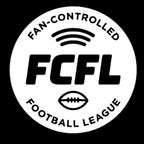What Makes the FCFL Different? Part Three
The major professional sports leagues offer an incredible product. We love them. We consume them with unbridled and unapologetic enthusiasm ourselves. Monday Night Football, Christmas NBA triple headers; NHL Playoffs — these are institutions, baked into the very fabric of our lives, both digital and real. They showcase the best talent in their respective sports that the world has to offer. What’s not to like?
They are also rooted in mythology, which has its pros and cons. On the positive side, these leagues have a palpable sense of lore associated with them. Just hearing the NFL Films orchestra sets off a pavlovian response mechanism that gets our blood pumping and our stomachs craving buffalo wings. They have a unique history shared by their fans and players alike; a tangible narrative with which to entertain their consumers. Cowboys and Niners, Yankees and Red Sox, Wilt’s 100 points and Broadway Joe’s victorious prediction.
They have tradition.
But tradition also carries with it some encumbrances. They are tied to it and slow to adapt from it, even when doing so would be an obvious win for their organization. They constantly worry about change and how it will affect the relationship with their fans. Even something as seemingly mundane as putting an advertisement on a jersey is celebrated as monumental innovation. The idea of technological shift isn’t just unfathomable to these leagues; it would represent a complete deviation from the story they have told for decades. They are tethered to their old-school operations like a ship to a dock because at the very core of their value proposition is the story. The narrative that often carries more value to the act of fanaticism than does the very quality of play on the field. They simply cannot do what we can do.
We will foster more innovative approaches to sports media than can the major existing professional leagues. Let’s take a look at how:
Part Three: We are building our games with production of the digital audience at the core
Going to a major pro sports game is a hell of a time.
The intensity, the comradery, the tailgates that last longer than the games themselves. The thrill of victory; the agony of defeat. It’s a whirlwind of emotions and borderline sensory overload, with flavors and noises and visual stimuli abound (but no chicken sandwiches for Falcons fans on Sundays).
You also must suffer through hours of traffic, both coming and going, fees in the hundreds of dollars for parking and tickets and hot dogs and drinks and programs and peanuts, snaking lines of people in desperate need of a toilet, wind and rain and snow and heat and cold, all from the comforts of your stiff seat in the third deck that’s always suspiciously warm when you first sit down. And when you do find your seat and start watching the game, you realize how difficult it is to follow the action from such a distance. You find yourself watching the game on the jumbotron, or scrolling your phone to check the action from the other games. For all the money and energy you put into attending the game, you wind up watching very little of the actual game itself; and by the fourth quarter, you remember how badly you wish you were on your couch watching a professional broadcast checking your fantasy matchup with your phone plugged into a charger.
And your shoes are squishy and smell of overpriced light beer for the rest of the week.
Most leagues are built primarily for an in-person audience, with massive stadiums seating up to 100,000 fans at a time. And while technological enhancements like HDTV have certainly improved the viewing experience for those not in the stadium, video content has remained fairly static over the years. The leagues have developed a phenomenal product, and they are resistant to tinker with it very much at all.
At the FCFL, we are not only prepared to embrace technology as part of the production strategy; we are specifically building our game with video capture at the heart of the action. Rather than give each team a home stadium for fans, we will be building one arena that will serve as a production studio specifically outfitted for video capture of all kinds. Each of our games will be played consecutively at the studio: think American Ninja Warrior, but for football. By focusing our on-field production on the digital experience, we will be able to integrate all sorts of new camera technology into our games. Helmet cams, drone cams, cams of all kind. Wearable sensors and in-arena technology — even embedded in the game ball itself — will provide a constant stream of data to enhance broadcasts and push the envelope of football analytics, helping fans make the best possible decisions from roster moves to play calls.
Both the FCFL and the Studio Arena will serve as a sports technology “playground” for emerging technology in sports and entertainment. We will make all content readily available and consumable for the fans who, after all, also make up our coaching staffs. Data will flow through our app like a Tom Brady offense during a two-minute drill.
We can’t wait to get the season underway and showcase all of the innovations we have in store for your fan experience, but there is more work to be done first!
Continue reading and join the discussion at FCFL Headquarters!
